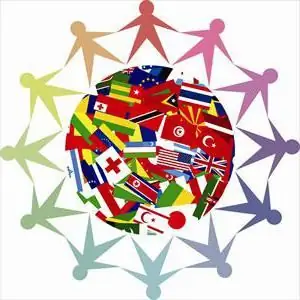- Author Henry Conors [email protected].
- Public 2024-02-12 02:41.
- Last modified 2025-01-23 09:07.
At all times, people tried to unite in certain groups in order to make it easier and more convenient to coexist: to get food, maintain life and defend themselves from the enemy. In this article, I would like to talk about such a form of primary community as a community.

What is this?
First of all, it is worth understanding the very concept of "community". This is a certain form of coexistence of people (both blood relatives and those who do not have close ties), which arose in primitive times. It is worth saying that there is a tribal community, a family community, as well as a neighborhood community. Let's start with the most important. The tribal community itself is the first step towards the organization of their life by people, the transition from such an unordered form of cohabitation of people as a herd. This became possible during the heyday of matriarchy (a woman was considered the head of the family). This very form of cohabitation was based on consanguinity. Its essence was the following points:
- common residence for all members;
- joint housekeeping: separation of duties;
- working together for the benefit of the community.
These are the three main points that united people to achieve one goal - a normal existence. Also, this form of cohabitation and housekeeping involved not only taking care of oneself, but also of one's descendants (which was not the case with the herd form of life). An important point was also the primary division of labor: women were mainly engaged in housework, men got food. As mentioned above, the tribal community arose during the heyday of matriarchy, so often the father of the child was not known (such was the form of marriage at that time), the line of kinship was drawn from the mother. Somewhat later, the circle of persons who could participate in marital relations was narrowed, and sexual relations between uterine relatives - brothers and sisters were also prohibited.

Rulers of the tribal community
Who ran the tribal community? For this, there was a certain structure of authorities:
- general meeting of the clan - here a collective decision was made on a particular issue;
- council of elders - special people who were trusted by the community made decisions;
- leader, elder - could make a single decision, because again, he was unconditionally trusted.
Family community
Having figured out what a tribal community is, it is worth giving a few words to such a form of organizing people as a family community. This is the next stage in the development of the collective coexistence of people, based on the development of agriculture and the emergence of special tools and labor technologies.(the emergence of a plow for cultivating the land, the spread of cattle breeding). The family community included several generations of blood relatives. Interestingly, their number could even reach 100 people. The essence of the family community: collective ownership of everything that is in the family. At the very beginning, the management of this form of organization of people was carried out more democratically: the eldest man (or elected) was considered the head, on the female side - his wife. Somewhat later, they began to elect a "senior", who actually was the owner of everything that belonged to the family community.

Neighborhood Community
The next stage in the development of human relations is the tribal neighborhood community. It was also called land, or rural. Its distinguishing feature from those described above is that here people might not be related by blood to each other. This form of relationship arose during the collapse of tribal relations. At first, people were united by common ownership of all tools of labor, livestock and land, a little later everything changed: the inhabitants began to be divided according to skills, diligence, and the ability to accumulate we alth. This form of coexistence is more difficult in that it required the unity of the neighboring community, which was not so easy to achieve.






